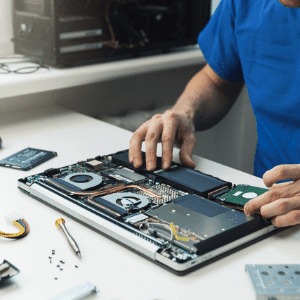Forensic Image vs. Original Data: Implications for Digital Evidence in Court-Martial Cases

In the digital age, court-martial cases increasingly involve electronic evidence. Understanding the difference between a forensic image and original data is crucial for both prosecutors and defense attorneys. This distinction can significantly impact the admissibility and interpretation of digital evidence in military courts.
What is a Forensic Image?
A forensic image is an exact, bit-by-bit copy of a storage device, such as a hard drive, USB drive, or mobile phone. This copy captures all data on the device, including deleted files, fragmented data, and system files. The forensic image are created using specialized software and hardware to ensure the integrity of the original data.
Key differences between a forensic image and original data
Preservation: A forensic image allows investigators to examine data without altering the original device.
Reproducibility: Multiple identical copies can be made from a single forensic image.
Admissibility: Properly created forensic images are generally accepted as evidence in court.
Analysis: Forensic images enable in-depth examination without time constraints or risk of data loss.
Implications for Court-Martial Cases
The use of forensic images in court-martial proceedings has several important implications:
Chain of Custody
Forensic images provide a verifiable chain of custody for digital evidence. Each step in the imaging process can be documented, reducing the risk of evidence tampering allegations. This is particularly important in military cases where multiple parties may handle evidence.
Data Integrity
By working with a forensic image rather than the original device, investigators and attorneys can ensure that the original evidence remains unaltered. This preserves the integrity of the data and strengthens its admissibility in court.
Expert Analysis
Forensic images allow expert witnesses to conduct thorough analyses without time constraints. This can lead to more comprehensive and accurate testimony, potentially influencing the outcome of a court-martial case.
Privacy Concerns
In cases involving sensitive military information, forensic images can be more easily controlled and secured than original devices. This helps protect classified data and maintain operational security.
Challenges to Authenticity
While forensic images are generally accepted as reliable, defense attorneys may challenge their authenticity or the methods used to create them. Understanding the technical aspects of forensic imaging is crucial for both prosecution and defense teams.
Deleted and Hidden Data
Forensic images can reveal deleted files, browser histories, and other hidden data that may not be accessible on the original device. This can provide critical evidence in cases involving cybercrime, espionage, or other digital misconduct.
Best Practices for Handling Forensic Images in Court-Martial Cases
Use certified tools: Employ forensic software and hardware that are widely accepted in the legal community.
Document the process: Maintain detailed logs of the imaging process, including hash values to verify data integrity.
Secure storage: Store forensic images in a controlled environment to prevent unauthorized access or alteration.
Expert testimony: Engage qualified forensic experts to explain the imaging process and analysis to the court.
Address potential issues: Be prepared to explain any discrepancies between the forensic image and the original data.
Consider limitations: Recognize that while forensic images are powerful tools, they may not capture all relevant information, such as cloud-based data or volatile memory.
The use of forensic images in court-martial cases presents both opportunities and challenges. These exact digital copies provide a powerful means of preserving and analyzing electronic evidence. However, their technical nature requires careful handling and explanation in legal proceedings.
For military justice practitioners, understanding the nuances of forensic image is essential. As digital evidence becomes increasingly prevalent in court-martial cases, the ability to effectively work with forensic images can make a significant difference in case outcomes.
By adhering to best practices and staying informed about advancements in digital forensics, legal professionals can ensure that forensic image serve as reliable and compelling evidence in military courts. This knowledge is crucial for upholding justice and maintaining the integrity of the court-martial process in the digital age.
Note: IndiBlogHub features both user-submitted and editorial content. We do not verify third-party contributions. Read our Disclaimer and Privacy Policyfor details.











